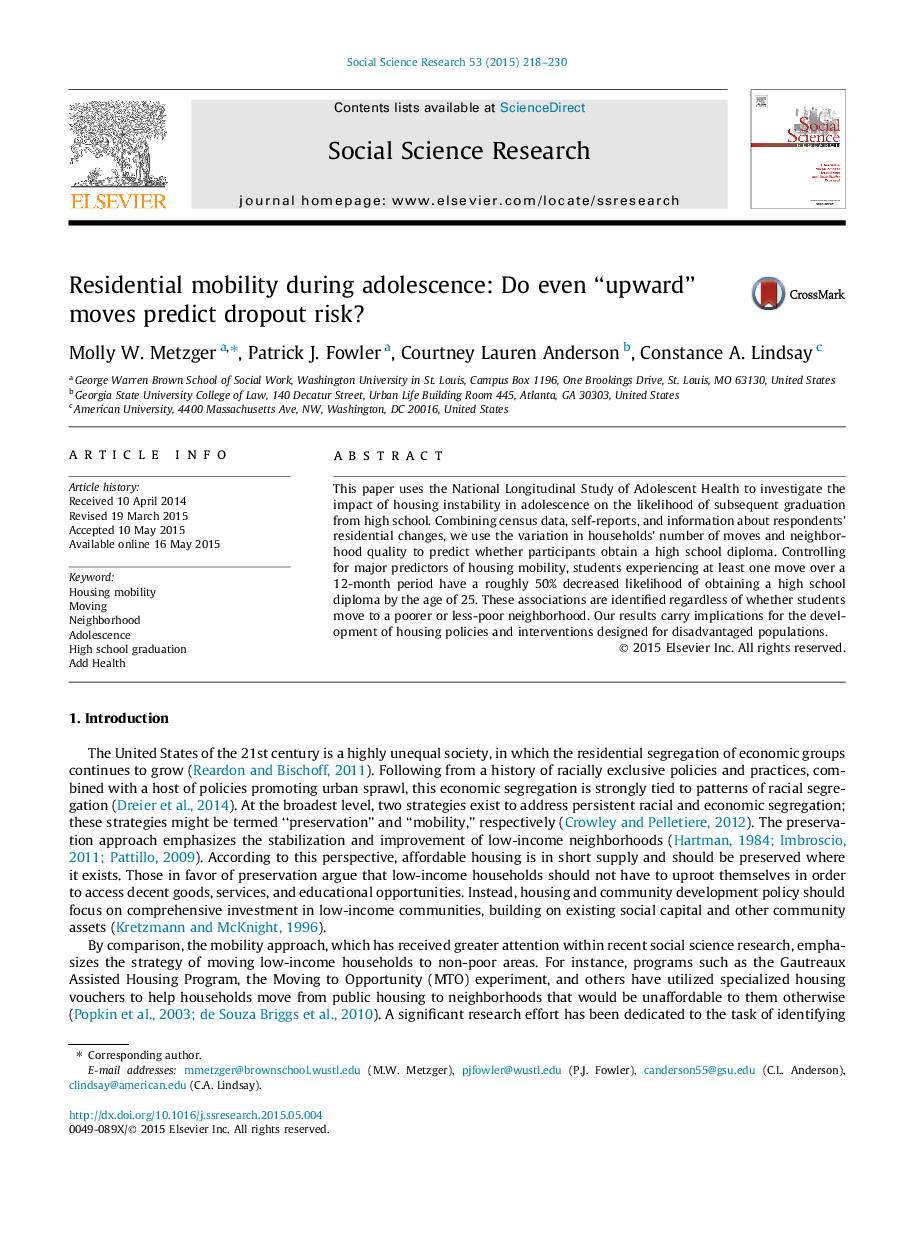| Article ID | Journal | Published Year | Pages | File Type |
|---|---|---|---|---|
| 955666 | Social Science Research | 2015 | 13 Pages |
•Add Health data were used to estimate the impact of residential mobility on high school graduation.•Moving during adolescence cuts the likelihood of attaining a diploma by roughly half.•This dropout risk persists even when adolescents move to more advantaged neighborhoods.
This paper uses the National Longitudinal Study of Adolescent Health to investigate the impact of housing instability in adolescence on the likelihood of subsequent graduation from high school. Combining census data, self-reports, and information about respondents’ residential changes, we use the variation in households’ number of moves and neighborhood quality to predict whether participants obtain a high school diploma. Controlling for major predictors of housing mobility, students experiencing at least one move over a 12-month period have a roughly 50% decreased likelihood of obtaining a high school diploma by the age of 25. These associations are identified regardless of whether students move to a poorer or less-poor neighborhood. Our results carry implications for the development of housing policies and interventions designed for disadvantaged populations.
